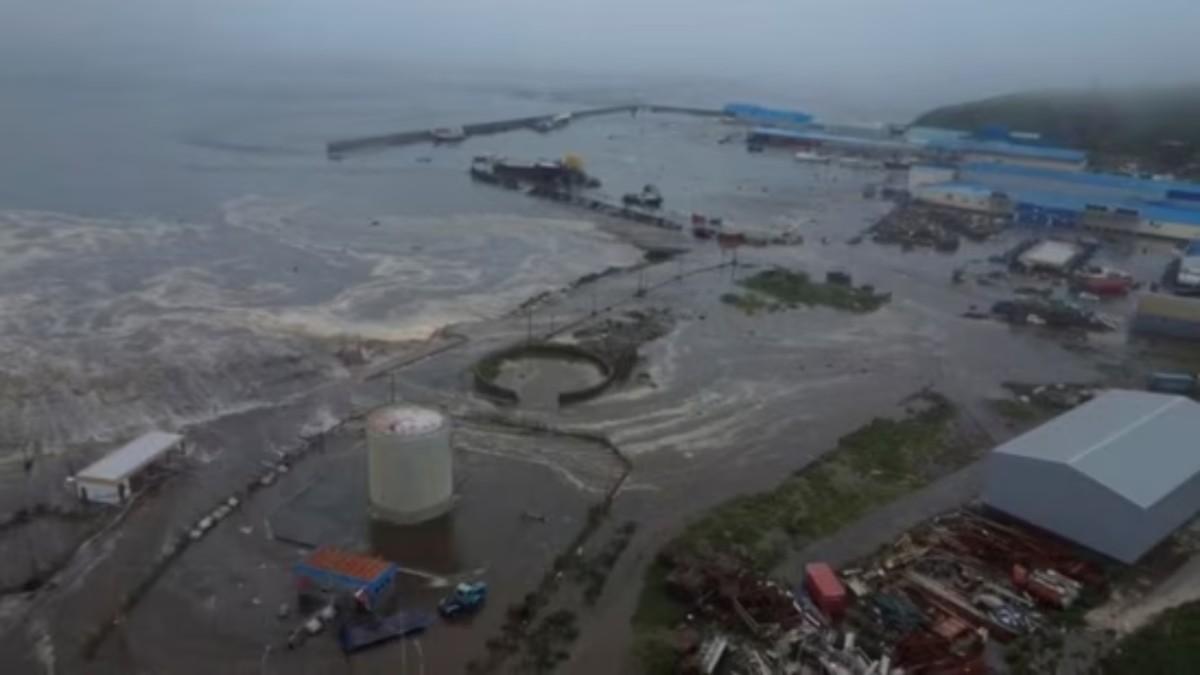
In a swift twist of nature’s rhythm, Tropical Storm Gil stirred Pacific waters by briefly intensifying into a hurricane before losing strength once more. As of August 2, Gil hovered over 1,250 miles west of Baja California, far from land but well within meteorological focus. With winds peaking at 74 mph before falling to 70 mph, the storm’s moody dance between categories sparked renewed interest in the 2025 season. The tropical storm Gil hurricane tracker signals further weakening, yet Gil remains a dramatic reminder of the ocean’s shifting temperament.
Story Highlights: Tropical Storm Gil Hurricane Tracker
-
Tropical Storm Gil briefly became a hurricane on August 1
-
Downgraded to a tropical storm by August 2 with 70 mph winds
-
Located 1,250 miles west of Baja California; no threat to land
-
Storm expected to weaken and become post-tropical by Sunday
-
No coastal warnings or watches issued
-
Gil is moving west-northwest at 20 mph
-
Another system, Tropical Depression Iona, also weakening in the Pacific
A powerful weather system swirling in the open waters of the Pacific Ocean brought brief concern to forecasters as Tropical Storm Gil strengthened into a hurricane late Friday, only to lose momentum by Saturday morning. According to the National Hurricane Center, Gil formed far from any major landmass and posed no immediate threat to coastal regions, but its rapid changes in intensity have drawn attention.
As of 5 a.m. Hawaii Standard Time on Saturday, August 2, Gil was located approximately 1,250 miles west of the southern tip of Baja California. Though a remote location, storms in this region are closely tracked due to their potential for rapid development and westward paths across the Pacific.
Storm Downgraded After Overnight Surge
The system initially appeared as a tropical storm on Friday, August 1, gathering strength as it traveled across warm Pacific waters. Overnight, it reached hurricane strength, only to be downgraded back to a tropical storm by early Saturday.
Forecasters at the National Hurricane Center noted a decrease in wind intensity:
“Maximum sustained winds have dropped to 70 mph, just below hurricane strength,” the advisory said.
“Higher gusts are still present, and tropical storm-force winds are extending outward up to 140 miles from the storm’s center.”
This sudden strengthening and weakening cycle is not uncommon during hurricane season, especially in remote parts of the Pacific where sea surface temperatures fluctuate.
Current Movement and Future Outlook
Tropical Storm Gil was moving west-northwest at 20 mph as of the latest update. The storm’s forward speed is expected to decrease by Monday, with Gil continuing on a more gradual westward path.
“The system is expected to weaken further through the weekend and could become post-tropical as early as Sunday,” said the center.
Satellite imagery released Saturday shows Gil maintaining an organized center, though cloud tops have begun to cool—a sign of weakening convection.
No Immediate Threat to Land
Despite its hurricane status for a brief period, Tropical Storm Gil remains isolated. The National Weather Service confirmed that no coastal watches or warnings are currently in effect. The storm is expected to remain far from the Hawaiian Islands and North American coastlines.
Still, meteorologists remain cautious.
“Even though it’s far from land, we keep an eye on these systems closely,” said a forecaster with NOAA.
“They can give us important data about storm behavior and help us refine models.”
Tracking Gil: Forecast Cone and Spaghetti Models
Using the tropical storm Gil hurricane tracker, forecasters released a forecast cone showing the most likely path of the storm’s center. However, they caution the public not to misinterpret this cone as an indication of the storm’s full width or impact.
“Historically, the center of a storm travels outside the forecast cone about 33% of the time,” NOAA said.
“The cone only shows where the eye might go—not where effects like wind or rain will be felt.”
Spaghetti models, which use multiple predictive models to estimate future movement, show Gil continuing a slow westward drift over the coming days with no sharp turns expected.
Pacific Remains Active: Iona Also Weakening
Gil isn’t the only system being monitored. Tropical Depression Iona, located over 1,400 miles west of Honolulu, continues to weaken and is forecast to cross the International Date Line on Saturday. Though it has not strengthened into a hurricane, Iona reflects what meteorologists are calling a “surprising tropical cyclone outbreak” to end July.
How Do Hurricanes Form?
The Pacific Ocean, especially in tropical latitudes, remains a prime zone for hurricane formation. Hurricanes originate from clusters of thunderstorms that form over warm ocean water, usually when temperatures are above 80°F.
These clusters, when fueled by favorable atmospheric conditions, begin to rotate and evolve into tropical depressions, then named tropical storms (when sustained winds reach 39 mph), and finally hurricanes once winds surpass 74 mph.
Preparedness: The Key to Hurricane Safety
With August underway—a historically active month for hurricanes—experts stress the importance of preparation, even if a storm seems distant.
“Waiting until a storm is on your doorstep is too late,” NOAA officials warn.
“Get your disaster supplies while the shelves are stocked and review your insurance coverage now.”
Key steps include:
-
Developing an evacuation plan
-
Stocking up on disaster supplies
-
Getting a flood insurance policy, which comes with a 30-day waiting period
-
Creating a family communication plan
-
Strengthening your home by trimming trees, installing storm shutters, or sealing wall openings
As the Pacific hurricane season accelerates, Tropical Storm Gil serves as a reminder of how quickly conditions can change—and why storm tracking remains essential, even when systems form far from land.
Though Tropical Storm Gil no longer holds hurricane strength, its brief intensification serves as a timely reminder of the unpredictable nature of tropical systems. As it continues to drift westward and gradually weakens, Gil highlights the importance of close monitoring—even for storms far from land. With the Pacific season entering a more active phase, the tropical storm Gil hurricane tracker remains a vital tool, ensuring preparedness stays one step ahead of uncertainty. In the ever-changing theater of ocean storms, even distant players can command serious attention.
Appreciating your time:
We appreciate you taking the time to read our most recent article! We appreciate your opinions and would be delighted to hear them. We value your opinions as we work hard to make improvements and deliver material that you find interesting.
Post a Comment:
In the space provided for comments below, please share your ideas, opinions, and suggestions. We can better understand your interests thanks to your input, which also guarantees that the material we offer will appeal to you. Get in Direct Contact with Us: Please use our “Contact Us” form if you would like to speak with us or if you have any special questions. We are open to questions, collaborations, and, of course, criticism. To fill out our contact form, click this link.
Stay Connected:
Don’t miss out on future updates and articles.








